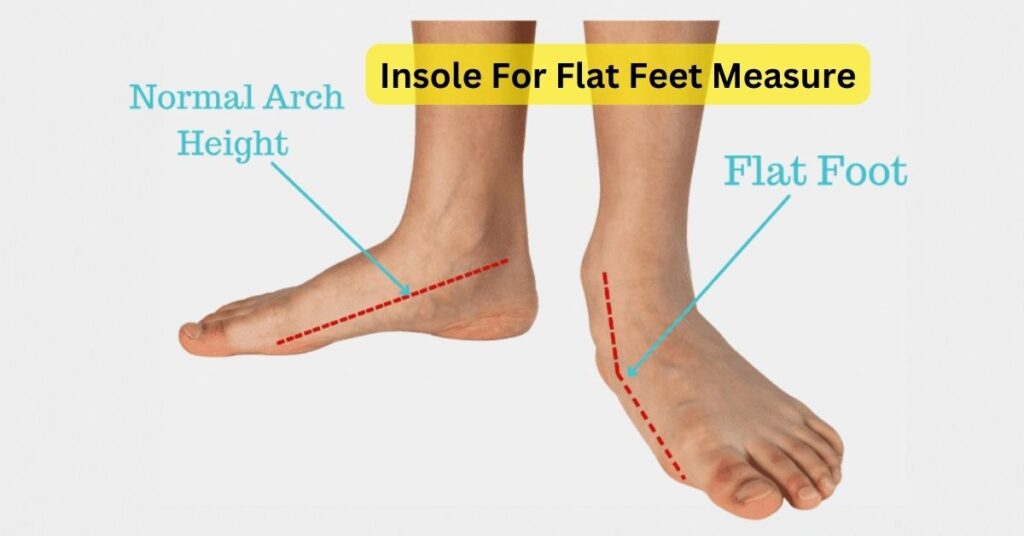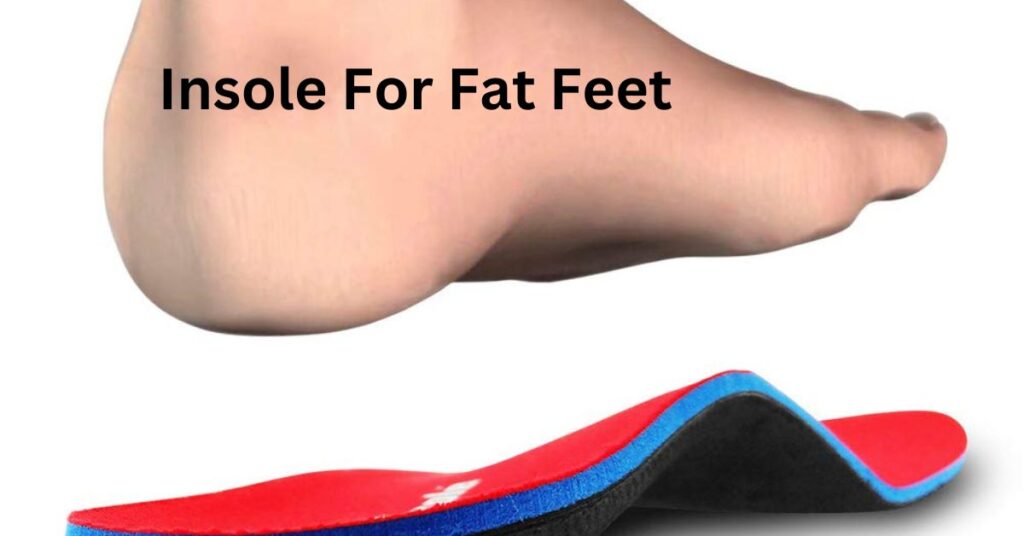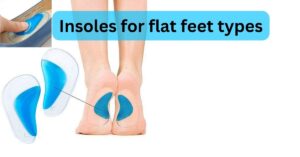Insoles for Flat Feet is enhancing foot health and comfort to foot
Insoles for Flat Feet is enhancing foot health and comfort to foot. Flat feet can pose several challenges to foot health and overall well-being. However, with the right support, individuals with flat feet can alleviate pain and discomfort. Insoles designed specifically for flat feet can be a game-changer, providing much-needed arch support, shock absorption, and gait correction. Here in this blog post, we will explore the benefits of insoles for flat feet, discuss different types of insoles, provide tips for choosing the right ones, and recommend some top products type. Additionally, we will address common FAQs related to acquiring insoles for flat feet.

Understanding Flat Feet:
The condition of having flat feet, commonly referred to as fallen arches, is characterized by the partial or full flattening of the foot arches. This can lead to foot pain, improper alignment, and difficulties with balance and posture. People with flat feet often experience symptoms such as arch and heel pain, fatigue, and discomfort while walking or standing for extended periods.
Benefits of Insoles for Flat Feet:
Arch support and stability: Insoles with proper arch support can help alleviate flat foot pain by providing the necessary structure and stability. They promote better foot alignment and distribute pressure evenly, reducing strain on the feet.
Shock absorption and impact reduction: Insoles for flat feet offer excellent shock absorption properties, minimizing the impact of each step. This helps reduce strain on the feet, ankles, and lower limbs, improving overall comfort and reducing the risk of injuries.
Improved biomechanics and gait correction: Insoles can correct common issues associated with flat feet, such as overpronation (excessive inward rolling of the foot) or supination (outward rolling). By aligning the feet properly, insoles optimize biomechanics and enhance natural foot movement.
Types of Insoles for Flat Feet:

Off-the-shelf insoles: These are readily available insoles designed for general arch support and comfort. While they may not provide the same level of customization as custom orthotics, they can be a cost-effective solution for mild to moderate flat feet.
Custom orthotics: Custom-made insoles are tailored to the individual’s unique foot structure and needs. They offer a higher level of customization and can address severe flat foot conditions or specific foot abnormalities. Custom orthotics are typically recommended by podiatrists or orthopedic specialists.
Factors to Consider When Choosing Insoles for Flat Feet:
When selecting insoles for flat feet, consider the following factors:
Arch support and cushioning: Look for insoles that provide adequate arch support and cushioning to reduce discomfort and promote proper foot alignment.
Material and durability: Choose insoles made from high-quality materials that are durable and provide long-lasting support.
Size and fit: Ensure that the insoles are the correct size and fit snugly within your footwear for optimal effectiveness.
Breathability and moisture-wicking properties: Look for insoles with breathable materials to prevent excessive sweating and odor.
Footwear compatibility: Consider the type of shoes you usually wear and ensure the insoles are compatible with them.
People Also Like To Read : Enhance Your Performance and Comfort with VKTRY Insoles
Recommended Insoles for Flat Feet:
Arch Support Insoles – These off-the-shelf insoles offer excellent arch support and cushioning for individuals with flat feet. They are made from breathable materials and provide shock absorption for enhanced comfort.
Custom Orthotics – For those with severe flat foot conditions, custom orthotics offer a personalized solution. These insoles are made after a thorough analysis of your foot structure and provide tailored support for optimal comfort.
Gel Insoles – Gel Insoles combine gel cushioning with arch support, providing a comfortable and supportive solution for flat feet. They are suitable for everyday use and can fit into various shoe types.

Tips for Using Insoles Effectively:
Gradual adaptation: Allow your feet to adjust to the new insoles gradually. Start by wearing them for short periods and gradually increase the duration over time.
Regular cleaning and maintenance: Keep your insoles clean to prevent the buildup of bacteria and odor. Follow the guidelines of the manufacturer for cleaning and maintenance.
Seek professional advice: If you have severe flat foot conditions or persistent pain, consult a podiatrist or orthopedic specialist for a comprehensive evaluation and personalized recommendations.
Conclusion:
Insoles for flat feet provide invaluable support, comfort, and relief for individuals struggling with fallen arches. By addressing common challenges associated with flat feet, such as improper alignment and discomfort, these insoles can significantly improve foot health and overall well-being. Whether you opt for off-the-shelf insoles or custom orthotics, finding the right fit and support is key. Take the time to explore different options, consult professionals if needed, and invest in your foot health for a more comfortable and active lifestyle.
How to Get Insoles for Flat Feet: (FAQs)
Where can I buy insoles for flat feet?
Insoles for flat feet are available at drugstores, specialty shoe stores, and online retailers. You can also consult with a podiatrist who may recommend specific brands or orthotic suppliers.
Do I need a prescription for custom orthotics?
Custom orthotics typically require a prescription from a podiatrist or orthopedic specialist. They will assess your foot condition and prescribe the appropriate custom-made insoles.
How often should I replace my insoles?
The lifespan of insoles varies depending on the quality, frequency of use, and individual factors. On average, it is recommended to replace insoles every 6 to 12 months or as recommended by the manufacturer.
Do insoles work for flat feet?
More structural support for flat feet can be provided by putting supportive insoles, sometimes known as “orthotics,” in your shoes. The insole’s supporting arch fills in for the fallen arches of the foot. You are less likely to experience aches and pains as a result of the healthy pressure distribution this promotes in your feet.
Can flat feet be corrected?
Additionally, custom orthotics can treat flat feet. Flexible flat feet that aren’t totally stiff are thought to be normal and don’t need to be treated. Consider getting a pair of custom shoe orthotics if you experience pain and spend a lot of time standing or walking.
What should I avoid if I have flat feet?
Flip flops, shoes with thin or flat soles, and several styles of high heels are examples of footwear that men and women with flat feet should generally stay away from. Look for shoes that will give you the support you require to engage in physical activity safely.